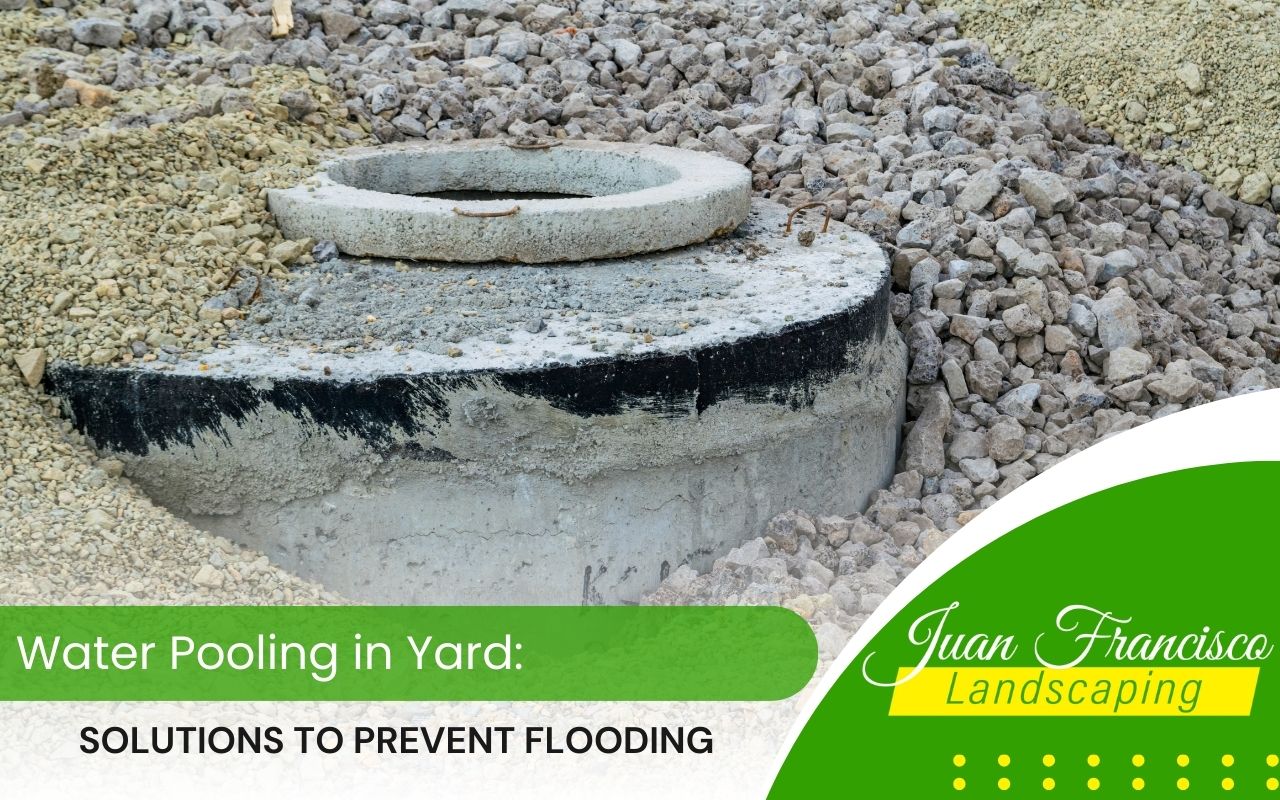
Water Pooling in Yard: Solutions to Prevent Flooding
Water pooling in your yard can cause various issues, from damaged plants to erosion and foundation problems. In Knoxville, where heavy rainfall and clay-heavy soil are common, many homeowners experience water pooling in their yards after storms. Thankfully, there are practical solutions to address this issue and improve your landscape’s drainage. By implementing the right drainage systems, you can protect your lawn, home, and garden from the long-term effects of standing water.
Understanding the Causes of Water Pooling in Your Yard
Why Does Water Pool in Your Yard?
Water pooling in your yard is often caused by improper grading, compacted soil, and poor drainage systems. In areas like Knoxville with heavy clay soil, water is slow to filter into the ground, leading to surface pooling. Additionally, low-lying areas, clogged gutters, and downspouts that direct water toward your yard can exacerbate the problem. Identifying the root causes of water pooling is the first step in finding a solution.
Effective Solutions for Water Pooling in Yard
1. Re-Grade Your Yard for Proper Water Flow
Proper grading is one of the most effective solutions for water pooling in your yard. By re-grading the landscape, you can create a gentle slope that directs water away from your home and toward designated drainage areas. The goal is to prevent water from accumulating in low-lying areas. A slight slope, sloping away from your house, ensures that water drains naturally and doesn’t pool in unwanted places.
2. Install a French Drain
A French drain is a popular solution for addressing water pooling in your yard. This system involves digging a trench, filling it with gravel, and installing a perforated pipe to allow water to flow away from the surface. French drains are particularly effective in areas where water tends to pool, as they allow water to flow underground, reducing the risk of standing water and improving overall drainage.
3. Create a Dry Well
A dry well is an underground reservoir that captures and stores excess water. It allows the water to filter slowly into the soil, reducing surface pooling. Installing a dry well in areas where water pools frequently can help prevent flooding and manage excess runoff. This system is especially useful in areas where water accumulates in low-lying spots.
4. Use Swales and Berms for Water Redirection
Swales and berms are landscaping features that help manage water flow. A swale is a shallow ditch that channels water to a designated area, while a berm is a raised mound of soil that redirects water flow. By using swales and berms strategically, you can redirect water away from areas where pooling occurs and prevent erosion caused by surface runoff.
Eco-Friendly Solutions for Water Pooling in Yard
5. Permeable Paving for Better Water Absorption
Traditional hard surfaces like concrete and asphalt prevent water from filtering into the ground, leading to runoff and pooling. Permeable paving materials, such as gravel, porous concrete, and permeable pavers, allow water to seep through the surface and be absorbed by the soil below. Installing permeable paving in areas where water tends to pool will help improve drainage and reduce the likelihood of water accumulating in your yard.
6. Install a Rain Garden
Rain gardens are designed to capture and filter excess water runoff from your yard. These gardens use native plants that thrive in wet conditions and help absorb water naturally. Installing a rain garden in areas where water tends to pool can help manage runoff, prevent erosion, and reduce standing water. Not only does a rain garden improve drainage, but it also adds an attractive, eco-friendly feature to your landscape.
Regular Lawn Maintenance for Long-term Solutions
7. Aerate Your Lawn to Improve Soil Drainage
Aerating your lawn is a simple yet effective way to improve water infiltration and reduce water pooling. By creating small holes in the soil, aeration allows water to penetrate deeper into the ground and reduces surface runoff. Aeration also helps alleviate soil compaction, common in areas with clay-heavy soil, making it easier for water to flow into the ground.
8. Maintain Your Gutters and Downspouts
Clogged gutters and downspouts can contribute to water pooling in your yard by directing water toward your landscape. Regularly clean your gutters to ensure water flows freely through the downspouts and away from your home. You may also consider extending your downspouts several feet from your foundation to prevent water pooling in your yard’s vulnerable areas.
Take Control of Water Pooling in Your Yard
Water pooling in your yard doesn’t have to be a persistent problem. Implementing the right drainage solutions and maintaining your landscape can improve water flow, protect your lawn, and prevent flooding. At Juan Francisco Landscaping, we specialize in addressing water pooling and drainage issues for Knoxville homeowners. Contact us today at (865) 455-3964 to schedule a consultation and find the right solutions for your yard.
